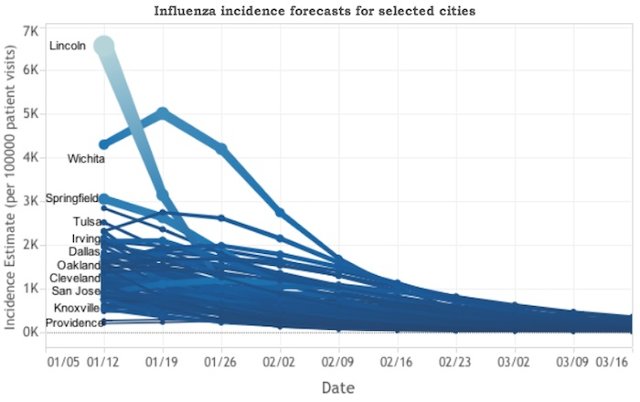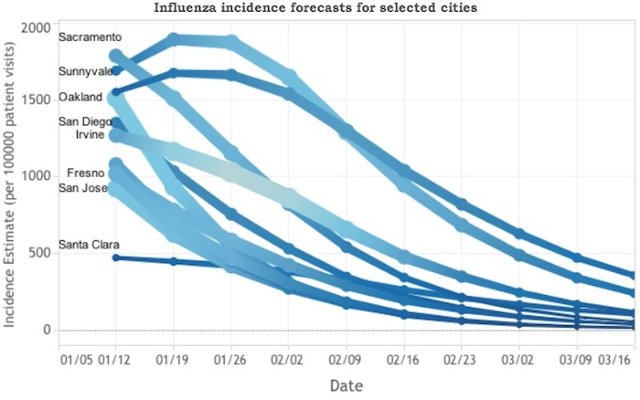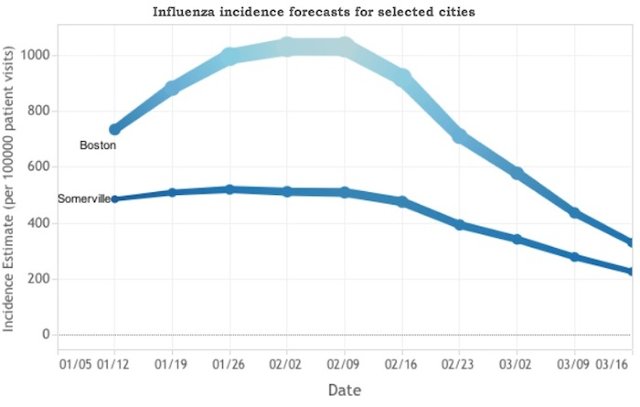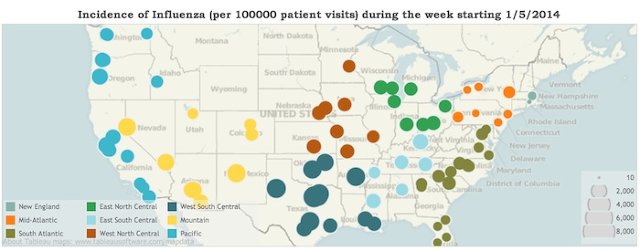Bertrand Russell
All posts by blackfriar
Deborah Rhodes: A test that finds 3x more breast tumors, and why it’s not available to you
- Not sure about this one – better diagnosis, no pecuniary interest, no business model vs GE and the entire RSNA cabal, very emotional
- It is a good story of why good, disruptive ideas hit the wall
http://www.ted.com/talks/deborah_rhodes.html
Deborah Rhodes: A test that finds 3x more breast tumors, and why it’s not available to you
Working with a team of physicists, Dr. Deborah Rhodes developed a new tool for tumor detection that’s 3 times as effective as traditional mammograms for women with dense breast tissue. The life-saving implications are stunning. So why haven’t we heard of it? Rhodes shares the story behind the tool’s creation, and the web of politics and economics that keep it from mainstream use.
Deborah Rhodes is an expert at managing breast-cancer risk. The director of the Mayo Clinic’s Executive Health Program is now testing a gamma camera that can see tumors that get missed by mammography.
In defence of Big Food
If only we agreed with them, they’d be happy. Powerful stuff.
http://www.forbes.com/sites/forbesleadershipforum/2014/01/28/how-big-foods-attckers-are-undermining-their-cause/
How Big Food’s Attackers Are Undermining Their Cause
Food activists serve three very important roles. They create public awareness about an important societal issue like obesity; they change attitudes and buying behavior; and ideally, as a result, they spotlight the next best revenue opportunity for industries that meet these new needs. However, a point comes when activism stops being constructive and becomes counterproductive hyperactivism. With respect to obesity, we’ve reached that point.
The problem is that instead of laser focusing on solving the biggest issue related to food consumption, obesity, hyperactivists bundle a host of food-related problems together and remain unsatisfied if all of them are not solved their way. So instead of zeroing in on obesity, which is a caloric matter, they throw their distaste for “Big Food” company practices into the mix: processed foods; the use of GMOs (genetically modified organisms); Bisphenol A (BPA) in bottled water containers; and excess levels of salt, sugar, and fat. Activists’ lack of focus promises only to inflame their war against the industry and wreak havoc with more constructive interaction between the public health community and the food industry.
Such engagement is having far better results than the bomb-throwing. Case in point: the Healthy Weight Commitment Foundation (HWCF)’sannouncement a few weeks ago that its member food and beverage companies sold 6.4 trillion fewer calories in the U.S. in 2012 than in 2007. Their original goal was cutting 1.5 trillion calories by 2015; they exceeded that goal by 400% and three years ahead of schedule. The University of North Carolina at Chapel Hill and the Robert Wood Johnson Foundation, two of the most credible authorities on public health, calculated and verified the results, which involved major packaged food and beverage companies.
While the American Heart Association and the Obesity Society praised the HWCF’s achievement, several hyperactivists remained unimpressed. The eyeball rolling, skepticism, and criticism began nanoseconds after the HWCF’s announcement. The Center for Science in the Public Interest, a food industry critic, told Advertising Age that the 6.4 trillion calorie drop could have resulted from health-conscious consumers voluntarily eating less, and that the food industry had nothing to do with it. Michele Simon, a food policy advocate and author of the book Appetite for Profit, told Politico that major food companies are selling more of their full-calorie foods and beverages overseas. Many suggested that food companies were manipulating the numbers. Others carped about the HWCF’s research process. A few purists called for regulation instead of voluntary programs.
A review of the facts suggests the criticism is unmerited. A study released January 16 by the U.S. Department of Agriculture shows Americans are eating118 fewer calories a day per person. The HWCF members’ 6.4 trillion calorie reduction is nothing to scoff at; it amounts to 78 calories per American per day. Considering that this 78-calorie reduction came from just the HWCF’s member companies, which sell only 36% of the packaged food and beverages purchased in the U.S., comparable contributions from the other 64% would make a serious dent in the average American’s food intake. These and other studies demonstrate a per capita decline in U.S. soda calories of 24% to 28%over the last decade, an increase in sales of lower-calorie foods and beverages, and a 90% reduction in beverage calories shipped to schools. All in all, serious progress against obesity is being made through public health/food industry collaboration—not through war.
The hyperactivists don’t applaud these facts because they can’t resist the urge to pile on, even when the aircraft carrier has already started to turn. We’ve seen them do this in other issues and campaigns besides obesity. They haveblasted Michelle Obama for her “Drink Up” campaign, alleging that her message to drink more water is really a plug for the bottled water industry. They criticized California Gov. Jerry Brown after he signed the nation’s strictest fracking regulations, claiming that nothing less than a total ban on fracking would do. They piled onto General Mills moments after the company announced it was removing GMOs from Cheerios. Why not Honey Nut Cheerios too, they argued.
If the more combustible activists follow Fed Up’s call to demonize the food industry and legal warfare ensues, further cooperation might become difficult. (In fact, one author and food industry critic, Gary Taubes, declared in the film, “If you want to cure obesity, you have to demonize some food industries.”) Some in the food industry see such messages as potentially setting the stage for multi-billion-dollar class-action lawsuits and cries for new regulation. With the prospect of a public and legal hanging, food companies may become too suspicious and worried about ulterior motives to see the market opportunities that lie underneath the activists’ attacks. The last 100 years of activist-industry wars provide vivid testimony of how social progress can slow when an industry is cast as Public Enemy No. 1.
To be sure, many industries have been guilty of bad behavior after being targeted by activists who railed against their products and practices. Rachel Carson, an early environmentalist, was attacked by the chemical industry as an alarmist after she published her seminal book Silent Spring in 1962. General Motors, instead of capturing the market for safer cars, which was ultimately co-opted by Volvo and Mercedes Benz, hired prostitutes to try to entrap Ralph Nader, while 50,000 people died each year in automobile crashes. Most tragically, about 2.5 million people died from smoking-related causes while tobacco companies fought for five decades against labeling and limits to smoking. These were not industry’s finest moments.
Some degree of skepticism is never a bad thing. Like good reporters, the food industry’s critics must ask the right questions, draw public attention to problems and issues, and keep their targets on their toes. Great social and public health changes, such as the eight-hour workday and sanitary meatpacking plants, have resulted from the spark of activism and the seismic shifts in public opinion that followed. But once the problem has been identified and the targeted industry shows a willingness to address it and delivers measurable results, the time comes for activism to take a more constructive turn.
Food activists should take a bow and congratulate themselves for generating high levels of awareness for America’s obesity epidemic and for helping drive demand for lower-calorie, better-for-you products. But the knee-jerk urge to demonize business, an all-or-nothing attitude toward how to address a problem, and the public-image, legal, and regulatory warfare that inevitably follows accomplish nothing. We should all be fed up with that.
This balloon is not a magic pill
- pity about the $2000 cost… reckon it’ll work.
- Left in stomach for 3 months
- Can have up to three of them in the stomach at a time.
http://www.theatlantic.com/health/archive/2014/01/this-weight-loss-pill-turns-into-a-balloon-to-fill-your-stomach/283399/
This Weight-Loss Pill Turns Into a Balloon to Fill Your Stomach

This is the Obalon system. It is a pill that has a balloon inside. Obalon is a weight-loss device, marketed as an alternative to bariatric surgery, that claims to help people eat less and “push back from the table sooner.”
Obalon begins to work when you swallow Obalon and it lands in your stomach. Obalon remains temporarily attached to a thin tube, through which doctors can inflate it. They then remove the thin tube, and the balloon stays in your stomach for up to three months, bobbing around like buoy in gastric waters. You can take up to three at a time, the manufacturers say.
The idea is that balloons partly fill your stomach to make you feel full, so you eat less. They are too big and buoyant to pass beyond the stomach. After twelve weeks, a doctor deflates the balloons and pulls them back out through your mouth.









“This balloon will act to educate [people] about portion size and retrain their brain and their mindset a little,” Dr. Sally Norton, a U.K. bariatric surgeon, told CBS News.
“Health experts warn that the balloon is not a magic pill.”
My initial reaction was the same as that of fitness expert Tim Bean. This balloon procedure does not make the stomach smaller, and seems like it could possibly make it bigger. I’m intrigued by the idea but skeptical of its long-term effectiveness. It also costs £2,000 ($3,321).
The Obalon balloon pill is approved for investigational use only in the U.S. However, it is approved in the E.U. and is available in Austria, Belgium, Germany, Italy, Luxembourg, the Netherlands, and Spain. What better way to see Europe than with expensive stomach balloons?
plasma-powered batteries…
super-cool, almost about time really… http://www.springwise.com/edible-batteries-power-tech-bodies/
Edible batteries could power tech inside our bodies
Researchers at Carnegie Mellon University have created ingestible batteries, that could make internal devices a possibility.

Hi-fi coffin…
The pharaohs would be proud, as will the archaeologists who dig it up…
http://www.springwise.com/hi-fi-coffin-audiophiles-offers-soundtrack-afterlife/
Hi-fi coffin for audiophiles provides a soundtrack to the afterlife
Created by Pause Ljud & Bild, the system consists of three different parts. Firstly, users create an account through the online CataPlay platform, which connects to Spotify and enables customers to curate a playlist for their own coffin or get friends and family to choose the tracks when they’re gone. The CataTomb is a 4G-enabled gravestone that receives the music from CataPlay and display the current track — along with details and tributes to the deceased — through a 7-inch LCD Display. Finally, the CataCoffin is where the parted will themselves enjoy two-way front speakers, 4-inch midbass drivers and an 8-inch sub-bass element that deliver dimensional high-fidelity audio tailored to the acoustics of the casket. The video below explains more about the concept:
Much like And Vinyly — the service that presses loved ones’ ashes into vinyl records — Catacomb Soundsystem caters for the fanatical nature of the audiophile who requires perfect sound even if they can’t hear it. Although priced at EUR 23,500, there’s certain to be an audience of music geeks that would willingly part with the cash.
Website: www.catacombosoundsystem.com
Contact: info@pauseljudbild.com
Spotted by Murtaza Patel, written by Springwise
Learn R with swirl
http://swirlstats.com/students.html
Flu Predictor
Pretty cool… lots of good imagery for a presentation.
One day, it’ll find itself on the weather report.
Put another way, the weather report is one of the most popular, early uses of big data available in the community.
http://www.fastcoexist.com/3025365/find-out-when-youll-be-sick-with-the-first-online-flu-predictor
Find Out When You’ll Be Sick With The First Online Flu Predictor
Want to know when exactly to start avoiding everyone around you who so much as sneezes? This online tool can tell you when the flu will strike in your city–more than two months in advance.
Luckily, it wasn’t the flu. But if it was, last week was also the first time I could have predicted when such a flu might strike my part of town, as it does during the peak flu months between October and April. That’s because, earlier this month, scientists at Columbia University’s Mailman School of Public Health uploaded a first-of-its-kind flu prediction model online.

In December, assistant professor of environmental health sciences Jeffrey Shaman told Co.Exist about the tool he and his colleagues had developed to predict the flu up to nine weeks in advance. Using data from Google Flu Trends and weekly CDC infection rates, the Columbia model was able to predict the exact timing of flu arrival accurately in 63% of the American cities it analyzed.
One day, Shaman suggested, the predictions might become so accurate that they’re eventually broadcast next to the weather on TV.

In the meantime, that model now exists on the good ‘ole Internet. It predicts some relief for Lincoln, Nebraska, which appears to be coming down from quite an illness, as does Wichita. Boston, on the other hand, looks like it’ll be experiencing an increase in flu cases over the next couple of weeks, as will New York City.


On the map above the predictor, you can check out CDC data for flu patient visits to the doctor’s office from the week prior. Next to the predictor, click on your state in the tree map to find out which cities will be most afflicted.
[Image: Blowing nose via Flickr user Anna Gutermuth]
Industrialised networking…
http://www.forbes.com/sites/michaelsimmons/2014/01/14/the-one-thing-you-should-do-after-meeting-anyone-new/
The One Thing You Should Do After Meeting Anyone New
At 24-years-old, Francis Pedraza is the co-founder and CEO of a venture-backed company, Everest. In addition, he is an advisor to 10 tech companies, each of whom he does hundreds of introductions for in return for equity.
It is hard to predict how my Forbes interviews will go. Most top relationships builders are not able to articulate how they do what they do.
Francis does not fall into this camp.
Within a few minutes of talking with him, he had transformed my perspective on relationship building.
The elaborate system he has created allows him to dramatically scale the value he adds to the people in his network.
How could a 24-year-old founder who is busy building a company offer more introductions than venture capitalists whose full-time job is to find and support portfolio companies into which they’ve invested millions of dollars?
Why You Should Share Your Network With Other Entrepreneurs You’ve Vetted
Imagine building a road to an amazing place and then only using it once.
That would not only be a waste; it would be selfish.
You’ve already incurred the cost, and it doesn’t hurt you if other people use it. In fact, it helps to share because you build relationships with other drivers who appreciate your generosity.
Despite the obvious benefits, most entrepreneurs fail to proactively share their networks of vendors, investors, employees, and partners.
They build it and then let it sit.
If you’re raising money, you talk to dozens of investors until you’re finished. Then, you focus on other networks. The same goes for interviewing dozens of employees and vendors to fill open positions. Once you fill a position, you stop looking until the next time you have a position.
Here’s the problem with the on/off approach: If you don’t always nurture these networks, then they are harder to activate when you need them.
Francis’ insight was to make introductions for other high potential tech companies to investors, designers, and engineers he already knew even when he didn’t immediately need these networks.
Speaking on why he made this decision, he shared two reasons:
-
Building Relationships With Investors
“When we raise our next round of financing, potential investors will be less likely to ignore me or act in bad faith, because they know that I’ve built a big network and proven its value.”
-
Learning From Top Entrepreneurs In Other Sectors
“By being a trusted advisor to other companies, I broaden my perspective in two ways. First, I become privy to the deepest challenges of other top tech companies. Secondly, I learn what they’re learning as they learn it.”
At this point, most people using Francis’ logic would take an ad hoc process to making introductions when people came top of mind.
Instead, Francis created an extremely powerful system that simplified and scaled his impact.
Focus On Quality Before Quantity
The difference between introducing an investor to a world-class entrepreneur and a talented entrepreneur is tremendous.
Investors earn almost their entire return from one in ten companies they invest in that hit it big.
With this in mind, Francis decided to actively search for and select high potential startups that he believed in that he could advise.
By primarily making only high-quality introductions to startups he had vetted, he could provide more value to investors and learn more from the entrepreneurs.
Why Making Hundreds of Introductions For A Single Company Makes Sense
Finally, instead of doing just a few introductions for each company, Francis does hundreds. To receive funding or to fill open positions requires talking to dozens of people. By only making a few introductions, you’re certainly helping, but you’re not pushing the ball forward as much as you could be given the need and your ability. Here’s Francis’ logic:
The reason I make hundreds of introductions rather than just a few is that fundraising is hugely impacted by momentum. It’s best to fundraise within a short window so that there is a lot interest at once and investors have time pressure. Furthermore, most investment meetings don’t turn into investments so startups need a lot of introductions in order to create momentum and find the needle in the haystack.
In order to scale the introductions you make, you have to organize your network in the right way. This brings us back to the title of the article…
Upfront Segmentation Is Better Than Top of Mind Later
The one thing you should you do after you meet someone is add them to the right cluster (i.e. – segment).
Most people treat their networks as one large connected cluster. The reality is that it is a set of many clusters.
|
|
|
|
|
OLD PARADIGM |
NEW PARADIGM |
This is critical because of relevancy. When you have a new article you want to share, a person you want to make an introduction for, or a dinner you want to invite people to, there two very likely possibilities:
-
The opportunities are only relevant for a small segment (i.e., common passion, specific industry, location, etc.) of your network.
-
Many of the opportunities you come across are relevant to the same few segments again and again.
The beauty of these two points is that if you find the segments that are relevant for your network, you can organize people into lists that you can reference whenever you need to.
Most people completely depend on who is top of mind. The problem is that the brain is designed to forget the large majority of what it’s exposed to. Just because someone doesn’t come to mind, it doesn’t mean that there aren’t many people who should have.
In my experience, by depending on what is top of mind, there is a good chance you’re missing relevant people by a factor of 10.
Because Francis divides his network into very clear segments upfront, knows how he is providing value, and has a tool that allows him to easily view segments, he is able to systematize all of his processes so they take dramatically less time.
Below is how Francis segments the investors in his network:
-
-
Corporate Development
-
Fund of Funds
-
Hedge Funds
-
Venture funds
-
Angel
-
Seed
-
-
Filtering.
-
Location
-
Fund Size
-
When The Fund Was Started
-
Check Size
-
To do segmentation, Francis uses social relationship intelligence platform, RelateIQ (see screenshot below). Started in 2013 with $40M+ in funding, the startup aims to use big data to help people build deeper relationships.
Collect Data On People To Segment, Not Just To Jog Your Memory
With this new approach, you collect basic data for one purpose; putting people in a segment.
This stands into contrast with most systems that are purely designed to jog your memory for the future.
Most segmenting / tagging systems get mired in complexity; tags that are too similar or no longer relevant. As a result, many give up because the process is too time-intensive.
Patrick Ewers, one of silicon valley’s top relationship management coaches and an advisor to Contactually (a platform similar to RelateIQ), helps guide his clients on how to segment their networks. In his words, “Before you go out and tag every single person with every single interest, narrow it down. Otherwise, it becomes a real brute force effort. You constantly have to add and remove people and tags. It’s one of those things that gets stale really fast. It’s like your address book that you never use. The key idea is simplicity. I recommend starting with only 5 segments.”
For too many people, networking is a bad word. It has come to signify individuals who use communication as an opportunity to broadcast what they want from others who aren’t even relevant to that product or service.
Relationship building has become the antithesis of this idea. It represents personalized and relevant giving in order to build a relationship.
Segmentation, when used properly, is one of the most powerful tools to deepen and scale the most important relationships in your life.
* * *
Michael Simmons is the co-founder of Empact, a global entrepreneurship education organization that has held 500+ entrepreneurship events including Summits at the White House, US Chamber of Commerce, and United Nations. Connect with him on Twitter (@michaeldsimmons) and his Blog.
Special thank you to Sheena Lindahl for reading drafts of this article and Jason Duff and Doug Fath for providing additional feedback.
The most devious social hack ever…
So very sneaky…
http://www.oliandalex.com/james-face/
JAMES’ FACE
I LIKE GOING ONTO MY FRIENDS FACEBOOK PAGE, TAKING PHOTOS OF HIM, CHANGING HIS FACE SLIGHTLY THEN PUTTING THEM BACK UP ON FACEBOOK. HE DOESN’T LIKE ME DOING THIS.

